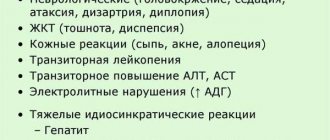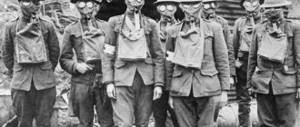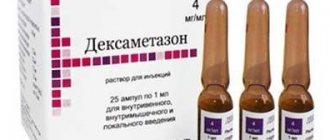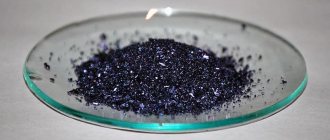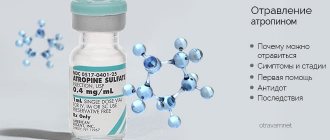Nowadays, most people, especially those living in private homes or with summer cottages, use products to combat parasites, insects, and weeds. Often they do not even suspect that they are dealing with OPCs, which are inherently toxic. They are called so because in them a phosphorus atom is bonded to a carbon atom. The connecting link is oxygen.
Characteristics of organophosphorus compounds
According to the toxicity of FOS there are:
- potent (LD50 <50 mg/kg),
- highly toxic (LD50 from 51 to 200 mg/kg),
- moderately toxic (LD50 from 201 to 1000 mg/kg),
- and low toxicity (LD50 > 1000 mg/kg).
Organophosphorus compounds are crystalline substances or liquids.
Most of them are highly soluble in fats and other solvents (xylene, toluene, acetone, chloroform), and have a specific kerosene-garlic odor. Only some of them are soluble in water, in particular chlorophos, methylacetophos, phosphakol. They are quite stable, but in an alkaline environment at high temperatures they hydrolyze within 24 hours. However, in an acidic environment, they can persist in soil for months. The toxicity of aqueous solutions at a temperature of 35 ° C can increase tens of times per day. Organophosphorus substances enter the body mainly through the mouth, as well as through the respiratory tract and skin. Human intoxication occurs due to the use of contaminated water; consumption of vegetables and fruits after treating gardens and vegetable gardens with appropriate FOS, when spraying them on trees and premises, consumption of milk from cows that have consumed contaminated water and feed, etc.. These same properties and their high volatility determine the intensive intake of poison through the skin and respiratory tract ways.
History of the creation of chemicals
Organophosphorus compounds were synthesized in 1846 by Thénard. In Russia, the issue of obtaining FOS was dealt with by A.E. Arbuzov. In 1905, he proposed a new method for the synthesis of organophosphates, called the “Arbuzov rearrangement”. In 1932, German chemists Lange and Kruger first described a clinical case of injury from diethyl fluorophosphate, and from that moment on, vigorous activity began to develop new types of chemical weapons.
By the beginning of World War II, the first chemical warfare agents and groups of organophosphorus substances—tabun, sarin, soman, and phosdrin—were synthesized. In 1955, Tammelin synthesized an even more toxic phosphorus compound (methylfluorophosphorylcholine), from which the group V-gases (VX) was created.
Effect on the body
Absorption of FOS begins in the oral cavity, then continues in the stomach and intestines. Due to their high lipoidotropy, they soon appear in the blood through any of the indicated penetration routes, in all organs, including the brain. In the body, their toxicity increases sharply, since about 50% of them are biotransformed in the liver according to the type of lethal synthesis, that is, with the formation of very toxic metabolites.
They are excreted from the body by the kidneys, about 30% unchanged, and 20-25% by the respiratory tract.
The toxic effect is due to their anticholinesterase properties. By interacting with acetylcholinesterase, organophosphorus compounds form an inactive phosphorylated complex that is capable of catalyzing acetylcholine. As a result, the content of this mediator in the synaptic cleft of cholinergic synapses sharply increases, which leads to prolonged excitation of m and n-cholinergic receptors.
In addition, these compounds can reduce the activity of proteases, acid and alkaline phosphatases, phosphorylate some proteins, disrupt blood composition, block membrane ATPases and disrupt the permeability of myocardial cell membranes.
Pathogenesis [edit | edit code ]
The toxic effect of FOS on the human body and animals is the binding of cholinesterase, an enzyme that destroys acetylcholine. Thus, excessive stimulation of choline-reactive structures by acetylcholine occurs in the body (the direct effect of FOS on these structures cannot be excluded) [1], leading to:
- spasm of smooth muscles (bronchi, gastrointestinal tract, orbicularis pupillary muscle);
- increased secretion of the glandular apparatus of the gastrointestinal tract, lacrimal, salivary, sweat, bronchial glands;
- development of bradycardia and hypotension (excitation of M-cholinoreactive structures of the heart muscle);
- development of hypercatecholaminemia (temporary increase in blood pressure);
- development of small fibrillary peripheral muscle cramps;
- damage to the central nervous system (headache, development of euphoria, followed by disturbances of consciousness up to the development of deep coma, as well as generalized convulsions [involving a large amount of muscle tissue of the victim]).
Stages of poisoning
There are two stages of acute poisoning with organophosphorus compounds:
- first (cholinergic),
- the second (non-cholinergic).
The first stage is manifested by the effects of significant stimulation of m and n-cholinergic receptors, i.e.:
Recommended topic:
- Mercury poisoning through the skin
- Arsenic poisoning, symptoms, first aid
- Poisoning with gases, phosgene, iodine, bromine,…
- miosis,
- spasm of accommodation,
- visual impairment,
- salivation,
- bronchorrhea,
- increased peristalsis and intestinal spasm,
- diarrhea,
- bradycardia,
- acute respiratory failure due to peripheral respiratory impairment (cholinomimetic effect).
In this case, psychomotor agitation, ataxia, shortness of breath, tremors, clonic-tonic convulsions, confusion, coma, paralysis of the respiratory center develop as a consequence of the central n-cholinomimetic effect.
In addition, as a result of excitation and subsequent paralysis of vital centers, nerve nodes and executive organs, there is first an increase and then a decrease in blood pressure, heart rhythm disorder, an increase and subsequent decrease in body temperature, signs of adrenal exhaustion, hyperglycemia, hypokalemia, and the appearance of edema lungs.
At the second stage of acute OP poisoning, the signs of the first stage begin to weaken somewhat, but signs of exotoxic shock appear:
- cyanosis,
- areflexia,
- heart rhythm disturbance,
- hypotension,
- manifestations of acidosis,
- cerebral edema,
- convulsions.
Sometimes, on the 2-8th day, a relapse of poison intoxication occurs.
Death in the first stage of acute OP poisoning can occur at the height of convulsions due to overexcitation and paralysis of the respiratory center, and in the second - through fibrillation of the ventricles of the heart, sudden cardiac arrest or paralysis of the respiratory center. Acute heart failure can be the result of aspiration-obstruction, peripheral respiratory disorders or toxic pulmonary edema.
Diagnosis of intoxication
The examination includes the study of indirect and direct signs of poisoning with organophosphorus compounds. For pathogenesis, it is advisable to have an idea of the location of the lesion and to warn doctors about the presence of a characteristic odor.
A biochemical study of blood composition helps confirm the presence of FOS. In addition, pay attention to the speed of the reaction - the clinic appears very quickly, which makes it possible to separate it from the manifestations of intoxication with chlorine, zinc, hydrogen sulfide, ammonia and other chemicals.
Clinical symptoms of FOS poisoning
During acute FOS poisoning, it is customary to distinguish 3 periods:
- acute - 1-3 days;
- complications - 4-14 days;
- long-term consequences - up to 3 years.
Manifestations of acute poisoning are determined by the stage and severity of intoxication and complications (of course, at the second stage - in the form of pneumonia, toxic hepatitis, nephropathy, myocardial dystrophy, etc.), and long-term consequences - in the form of asthenovegetative syndrome, myeloradiculoneuritis, polyneuritis.
Based on the rate of increase in the manifestations of acute poisoning with organophosphorus compounds, lightning-fast and slow-flowing forms are distinguished (mild poisoning, moderate poisoning, severe, extremely severe).
In victims with a fulminant form of intoxication, convulsive syndrome develops within the first 30 minutes after the poison enters the body.
Victims with mild poisoning complain of:
- dizziness,
- headache,
- Pain in the eyes,
- photophobia,
- "fog in the eyes"
- sometimes psychomotor agitation or depression,
- nausea,
- vomit,
- spasmodic pain in the abdomen,
- diarrhea,
- sometimes difficulty breathing,
- feeling of tightness in the chest.
They have sweating, pale skin, salivation, in some - moderate bronchorrhea, moderate miosis, with impaired pupillary reactions to light, trembling of the eyelids and outstretched fingers. Tachycardia, slight hypertension. Frequent urination. Cholinesterase activity is reduced by 20-50%.
More severe manifestations are typical for moderate poisoning . Victims show signs of bronchospasm and central nervous system disorders:
- psychomotor agitation,
- hallucinations,
- disorientation,
- ataxia,
- movement coordination disorders,
- myofibrillation (tongue, face, legs, chest),
- miosis,
- spasm of accommodation and visual impairment.
From the cardiovascular system, bradycardia or tachycardia, respiratory hypertension - shortness of breath with difficulty in exhalation, noisy or Cheyne-Stokes breathing are noted; glands - salivation, bronchorrhea, sweating; in the lungs - dry and moist wheezing; in case of oral poisoning - nausea, vomiting, abdominal pain, diarrhea. Urination is involuntary. There are no convulsions. Cholinesterase activity is reduced by 51-70%.
Severe forms of slowly occurring acute poisoning, in addition to the indicated cholinomimetic manifestations, are characterized by convulsions and loss of consciousness, and later bronchospasm. Breathing becomes bubbling, and a significant amount of foamy secretion is noted. Fibrillation covers all muscles. During convulsions, consciousness is lost. Body temperature rises. The development of acute respiratory failure is very dangerous. Involuntary not only urination, but also defecation are possible. Cholinesterase activity drops by 71-80%.
Extremely severe acute poisoning with FOS is characterized by the cessation of convulsions, the appearance of paralysis and coma. Consciousness, like reflexes, is lost, cyanosis increases, and body temperature decreases. Breathing is arrhythmic, shallow, frequent. The heart rate increases, and paroxysmal ventricular tachycardia is possible. There is acute vascular insufficiency (collapse). Cholinesterase activity does not exceed 10% of normal.
Mortality at the toxic stage of FOS poisoning is quite high. Affected individuals die from sudden cardiac arrest or ventricular fibrillation, central paralysis, or from acute respiratory failure due to paralysis of the respiratory muscles.
Clinical manifestations of acute OP poisoning are largely determined by the routes by which the poison enters the body. When a lethal dose of poison is administered orally, signs of acute intoxication appear within 10-15 minutes, coma after 20-30 minutes, and death after 3-9 hours. In case of prolonged acute poisoning, death occurs on the 2-6th day.
With percutaneous penetration, the first signs appear later, sometimes even after 2-3 days. They can occur suddenly after mild symptoms, in the form of weakness, headache, muscle twitching, sweating at the site of contact of the poison with the skin.
Symptoms of possible complications resulting from intoxication
Defeat of FOS negatively affects almost all groups of internal organs:
- The cardiovascular system suffers. The pulse rate reaches 120–130 beats. Arterial hypertension is observed, after which collapse usually develops.
- Excessive production of acetylcholine provokes profuse secretion of sweat and saliva. Miosis appears - a sharp constriction of the pupils, which is accompanied by loss of the light reflex.
- Initial convulsions when cholinesterase is inhibited lead to paralysis of the striated and respiratory muscles. Muscle tone disappears, nervous activity is disrupted.
Treatment of acute OP poisoning
When creating individual programs for providing emergency care to victims of acute OP poisoning, the efforts of medical personnel are directed, first of all, to eliminating the most dangerous manifestations of intoxication, in particular: the primary specific cardiotoxic effect (disorders of heart rhythm and conduction, acute heart failure, sudden cardiac arrest) , central respiratory paralysis, acute respiratory failure due to paralysis of the respiratory muscles.
The treatment program should include: a complex of intensive resuscitation measures and an active complex of specific and pathogenetic therapy. Of the resuscitation measures carried out at the scene of the incident, particularly important is gastric lavage (if the poison has entered the body orally), washing the eyes and washing it off the skin with plenty of water and soap or a 2% solution of sodium chloride, chloramine or ammonia. In case of acute inhalation poisoning, the victim should be removed from the contaminated room or area and the same measures should be taken. In the hospital they resort to forced diuresis or peritoneal dialysis.
First aid
As soon as the victim shows signs of organophosphate damage, several steps must be followed in succession.
Algorithm of pre-medical actions:
- In case of oral poisoning, it is recommended to rinse the stomach using such agents as magnesium sulfate, petroleum jelly, a universal antidote for poisoning - activated carbon, which is taken 1 tablet for every 10 kg of weight.
- If vapors penetrate into the pulmonary system, the person is taken out into fresh air and the gastrointestinal tract is also cleaned. An antidote and laxative are indicated.
- If the skin comes into contact with a substance that can poison, use a soap solution, 20% soda, or chloramine. When direct phosphorus damage is observed, the damaged area must remain moist, otherwise ignition is possible.
- If necessary, resort to indirect massage of the heart muscle.
The patient is quickly transported by ambulance to the hospital, where further therapy will take place.
Prevention
To prevent both acute and chronic poisoning by organophosphorus compounds, it is necessary to adhere to safety recommendations:
- To prevent pathology from becoming an occupational disease, work using protective equipment.
- Limit children's access to household products containing the chemical.
- Promptly dispose of empty containers and expired substances.
- In case of contact with skin, immediately remove clothing, rinse areas thoroughly, and trim nails and hair.
If prevention was not followed and you managed to poison yourself with phosphorus, phosgene, tetrachloroethane, organochlorine acid or other substances, you should urgently call doctors - symptoms appear quickly, often severe. Timely hospitalization will reduce the existing risks of complications, and possibly save the life of a seriously injured person.
Practitioner. She graduated with honors from Vitebsk State Medical University in 2012 with a degree in general medicine. She was awarded a certificate of honor for her achievements in her work.


